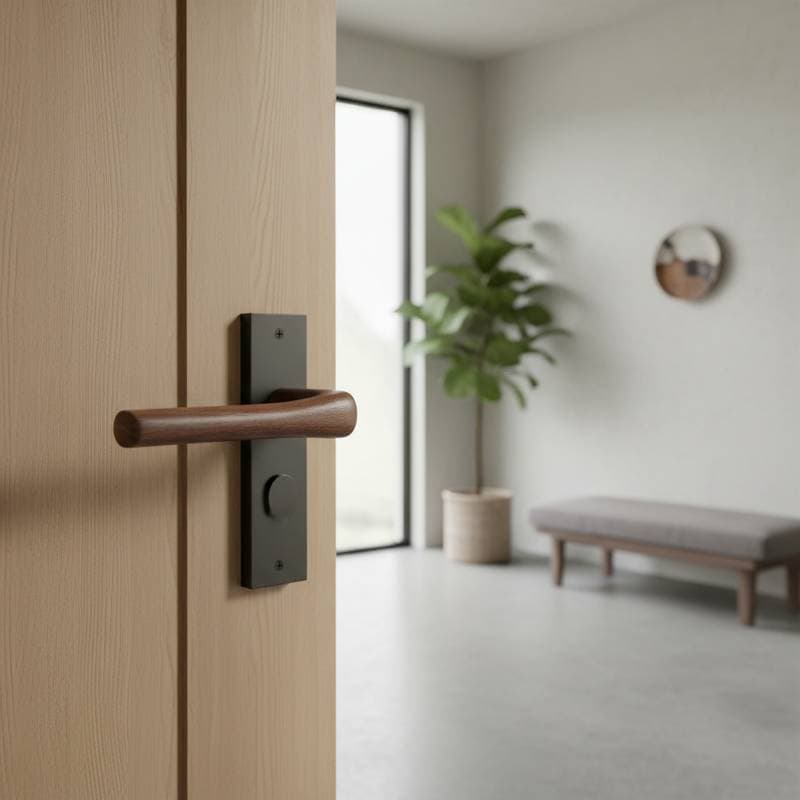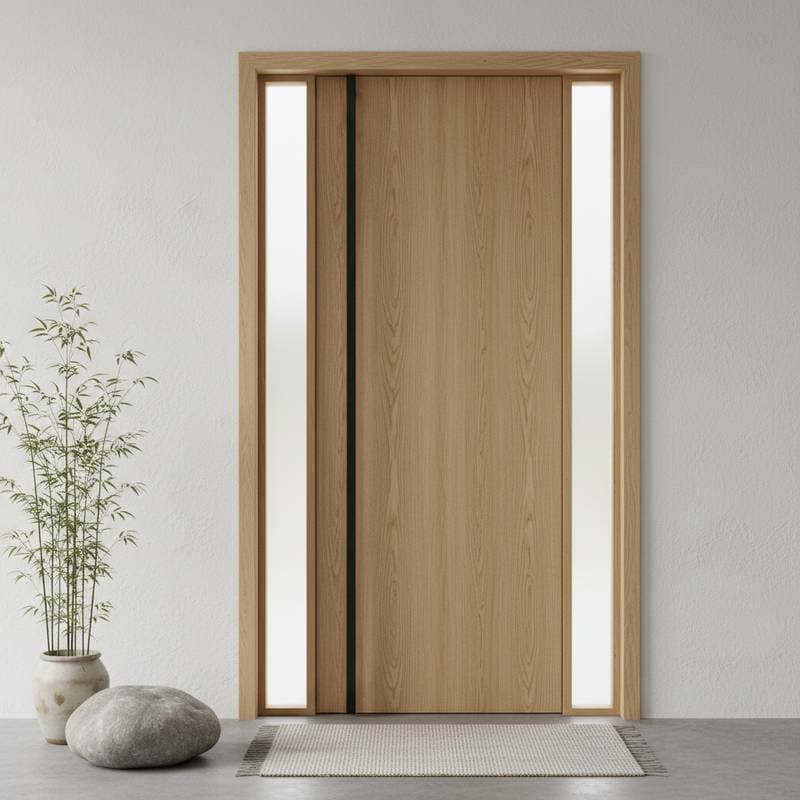Japandi Entryways: 2025's Premier Hybrid Design Trend
Japandi design captures the interest of homeowners seeking tranquility alongside functionality in their living spaces. This hybrid approach combines the clean simplicity of Scandinavian interiors with the serene minimalism of Japanese aesthetics. The outcome produces an inviting, clutter-free environment that feels warm and purposeful. Entryways serve as the initial impression of a home, making them an ideal location to adopt this trend.
For those planning a design refresh, a Japandi-inspired entryway represents an attainable and fulfilling project. Such a transformation enhances the home's aesthetic value and streamlines daily routines. The following sections outline expectations for planning, budgeting, and implementing a Japandi entryway project.
Average Costs for a Japandi Entryway Transformation
Homeowners generally invest between $2,500 and $8,000 to convert an entryway into a Japandi-inspired space. The overall expense varies based on materials, labor, and the area's dimensions. Minor updates, such as replacing doors, installing lighting, and applying finishes, range from $1,200 to $3,000. Full remodels that incorporate custom woodwork, flooring, and built-in elements can exceed $10,000.
| Project Element | Typical Cost Range | Details |
|---|---|---|
| Entry Door Replacement | $1,000 to $4,000 | Solid wood or composite door featuring a minimalist profile |
| Flooring Installation | $6 to $18 per sq. ft. | Options like bamboo, oak, or engineered wood for a natural finish |
| Built-In Storage | $800 to $3,000 | Floating benches, concealed cabinetry, or open shelving solutions |
| Lighting | $200 to $900 | Pendant fixtures, recessed lights, or wall sconces for soft illumination |
| Paint and Finishes | $400 to $1,200 | Neutral or earthy tones applied in a matte finish |
| Decor and Accessories | $150 to $600 | Mirrors, woven baskets, and ceramic trays for subtle accents |
These estimates cover both materials and labor. Local contractor rates, material choices, and necessary structural changes influence the final amount.
Selecting the Ideal Door for Your Japandi Entryway
The entry door acts as the central feature in any entryway. In Japandi design, select a door that appears natural and restrained, free from ornate details.
| Door Material | Cost Range | Aesthetic Qualities |
|---|---|---|
| Solid Wood (Oak, Walnut, Maple) | $1,200 to $3,500 | Warm tones, visible grain patterns, and enduring appeal |
| Bamboo or Composite | $900 to $2,200 | Sustainable sourcing, lightweight texture, low upkeep |
| Frosted Glass with Wood Frame | $1,800 to $4,000 | Light diffusion while preserving privacy |
| Flush Panel Veneer | $700 to $1,500 | Streamlined profile with contemporary elegance |
Wood or wood-like doors align best with the style. Opt for straightforward paneling or flush surfaces paired with matte hardware. Steer clear of elaborate molding or decorative glass that might interrupt the serene aesthetic.
For hardware, matte black, brushed nickel, or brass finishes harmonize with Japandi principles. Lever handles or simple pulls provide understated refinement. To install, measure the existing frame precisely and consult a professional for seamless integration.
Effective Storage and Organization Strategies
Organization forms the core of Japandi design. Clutter-free surfaces contribute to the space's peaceful ambiance.
Incorporate built-in benches with concealed drawers, wall-mounted shelves, and recessed cubbies to handle everyday items efficiently. These elements maximize utility without overwhelming the visual field.
| Storage Option | Typical Cost | Best Use |
|---|---|---|
| Floating Bench with Drawers | $600 to $1,800 | Storing shoes and small accessories |
| Wall Hooks or Peg Rails | $50 to $250 | Hanging coats, hats, and bags |
| Slim Console Table | $150 to $600 | Organizing keys, mail, and entry necessities |
| Built-In Cabinetry | $1,000 to $3,000 | Providing hidden space for seasonal items |
Maintain visible surfaces by using woven baskets or linen bins for smaller possessions. Regularly assess and purge unused items to sustain the minimalist ethos.
Thoughtful Decor and Styling Elements
Decor in a Japandi entryway remains restrained yet intentional. Select items that echo natural shapes and textures. A handcrafted ceramic tray for keys, a solitary piece of abstract wall art, or a arrangement of dried branches suffices to add character.
Introduce greenery via compact potted plants like bonsai trees, snake plants, or peace lilies. These varieties flourish indoors and amplify the organic motif. Position them on shelves or the floor to draw the eye without crowding the area.
Textiles play a key role as well. A woven rug or jute runner introduces warmth and tactile comfort. Avoid vibrant patterns or saturated hues that could disrupt the tranquil mood.
Ensuring Maintenance and Long-Term Durability
Japandi entryways emphasize resilience and straightforward care. Consistent upkeep preserves the appeal of the materials.
- Wood Care: Clean surfaces using a damp cloth and gentle soap. Refrain from harsh cleaners. Renew the finish periodically to retain the wood's texture and color.
- Flooring: Place felt pads beneath furniture legs to avoid scratches. Sweep or vacuum frequently to eliminate abrasive particles.
- Lighting: Remove dust from fixtures each month and opt for energy-efficient LED bulbs during replacements.
- Textiles: Clean rugs through washing or vacuuming at regular intervals to preserve their freshness.
Natural materials develop gracefully over time, with subtle patina enhancing their authentic quality.
Insights from Design Experts
Professionals anticipate Japandi's enduring popularity, thanks to its timeless nature and adaptable use.
Interior designer Lila Peterson of Oak Studio Design states, “Japandi resonates with homeowners who want both calm and practicality. It is not a passing trend but rather a lifestyle choice that encourages thoughtful living.”
Contractors highlight the practical benefits of minimalism as well. A simplified entryway appears refined and eases maintenance tasks. Adopters often report decreased visual clutter and greater admiration for artisanal details.
Steps to Implement Your Japandi Entryway
A Japandi-inspired entryway requires no extensive overhaul. Begin with basic changes, such as applying fresh paint, clearing surfaces, or installing a contemporary wood door. Gradually incorporate premium features like hardwood flooring or integrated benches.
Focus on high-quality materials, efficient layouts, and diffused lighting throughout the process. Consult local experts for custom elements to ensure precision.
This design choice suits those preparing a home for sale or desiring a more serene atmosphere. A Japandi entryway greets inhabitants with soothing energy and establishes a harmonious tone for the entire residence. Through deliberate planning and skilled execution, achieve a space that blends Scandinavian coziness with Japanese poise, enduring as a stylish haven for years ahead.






